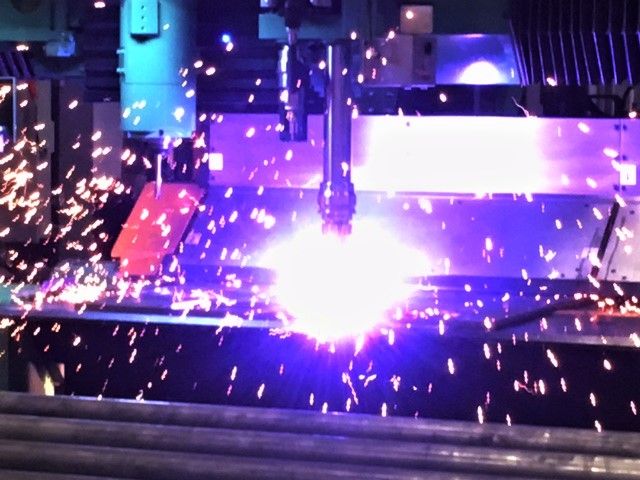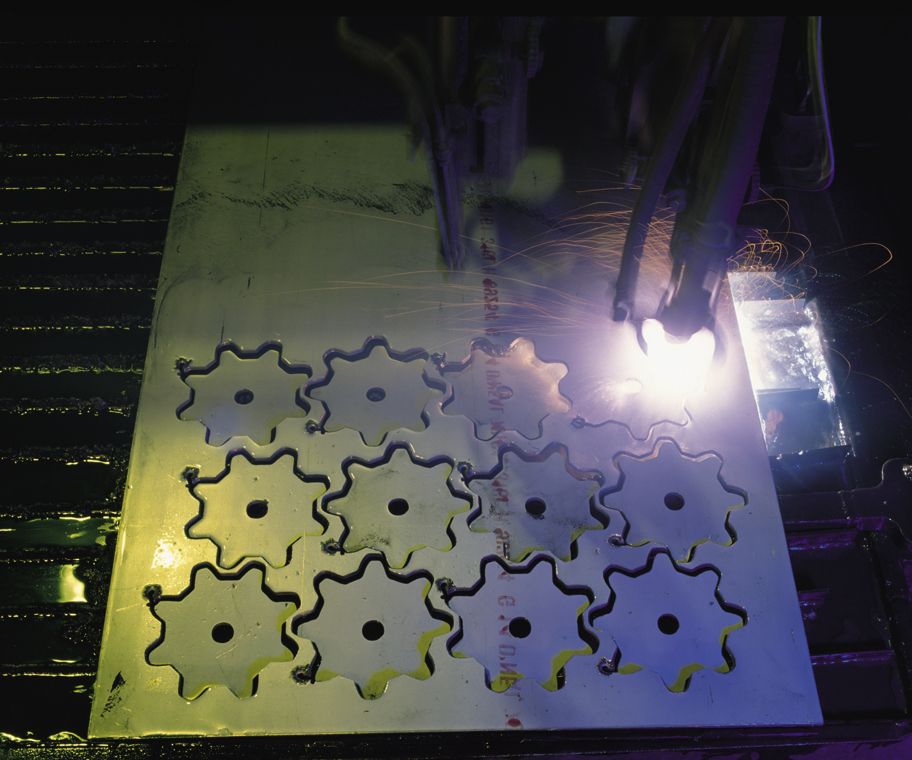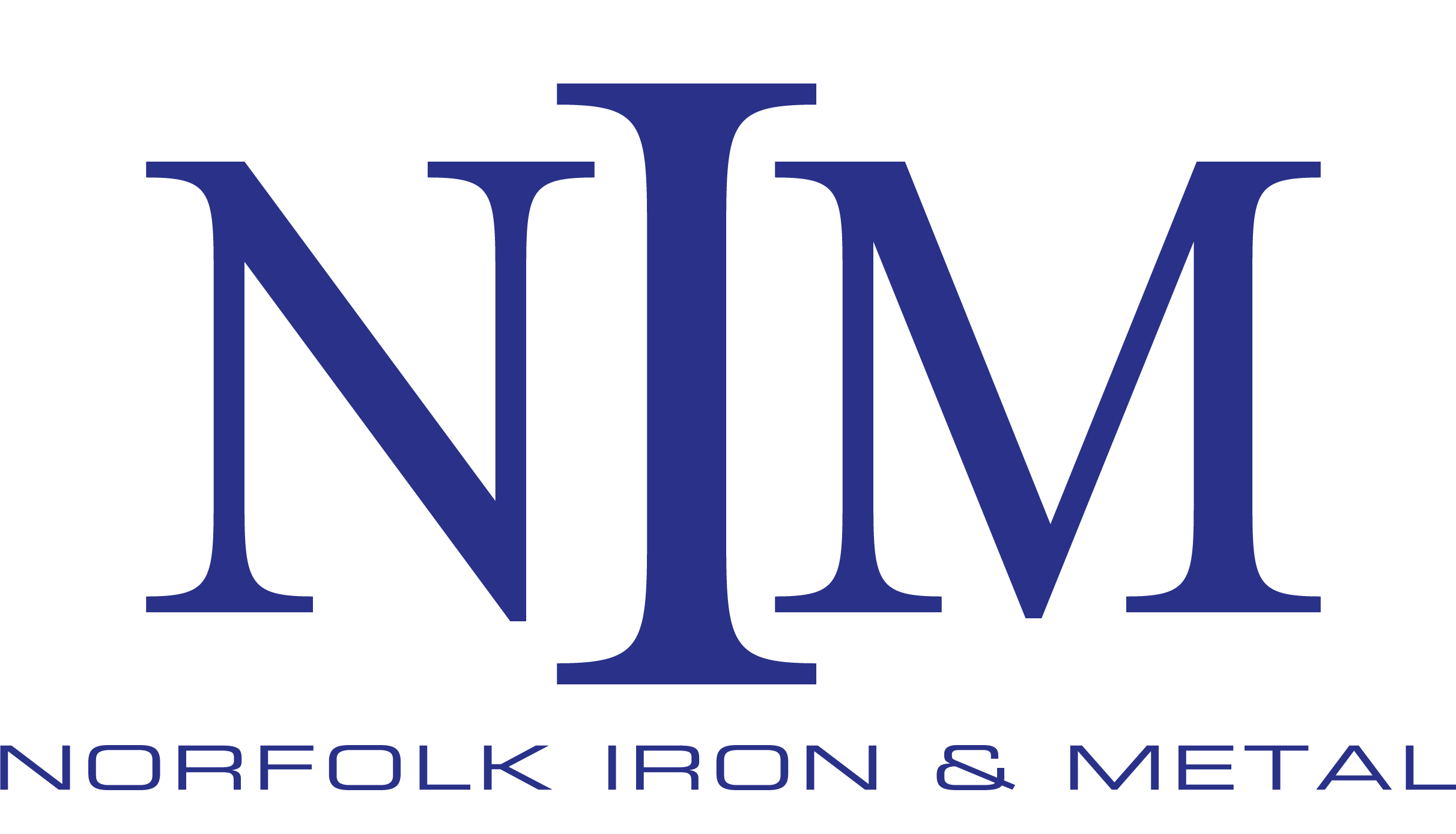There are hundreds of different ways to finish processed steel. Each is unique, offering different pros and cons, and suited for different applications. In the next few months, we will be exploring what each of these processing methods entails. This month we start off with five of the most common: beveling, blanking, hole punching, laser cutting, and leveling.

Beveling
When it comes to welding, the metal pieces involved need to be prepared so they fit together smoothly. That’s where beveling comes in. Beveling is the process of cutting the butting ends of metal pieces at a diagonal so they fit cleanly together. The slope, cut to the width of the metal, offers greater surface area so the weld is stronger.
In addition to overall greater strength, beveling creates a better bond for two other reasons. The process also reduces the thickness of the metal at the butting endings. The precision and durability of beveling also minimize the risk of cracking in the centerline. It is possible to create an even stronger weld by first creating a double weld. This process reduces the risk of gapping where the metal pieces meet.
Beveling reinforces a weld in a relatively quick and efficient process. It is important to wear safety gear during the process because of the emissions produced. When you entrust your beveling to the Norfolk Iron & Metal Group, our Cd’A Metals division will take care of it to finish processed steel to your satisfaction.

Blanking
Blanking, sometimes referred to as precision blanking, is a process of punching out blanks from metal coils. The coil is fed continuously between a die and a press, and the piece of metal to be used, the blank, is punched out of the larger sheet. The process is beneficial in its waste management properties.
Blanking is also a very quick and accurate method to finish processed steel, making it very efficient. It is ideal for specialized parts as the process is very customizable. In the Norfolk Iron & Metal Group, we perform all blanking applications at our Metalwest facilities, and we branch out beyond just steel. In addition to stainless and carbon steel, we also work with iron, aluminum, and copper.

Hole Punching
At Cd’A Metals, another method we provide to finish processed steel is hole punching. It follows a similar process to blanking, using dies and other tools to punch through sheet metal, but the goal of hole punching is to work with the piece with the hole in it, instead of working with the punched-out piece. The dies serve to stabilize the metal, giving the fabricator the power to mold the sheet metal as necessary.
Punching has its limitations as a way to finish processed steel. Generally metal must be between 25 and 30mm thick for the proper precision to be achieved. The punch weakens and then severs the metal to create the desired hole, and the excess metal falls out of the bottom. Hole punching is used in many applications, including manufacturing, engineering, automotive, textiles, and even pharmaceuticals. It is not limited to steel, also applying to aluminum, iron, brass and copper.

Laser Cutting
We would be remiss in enumerating the ways to finish processed steel if we did not elaborate on laser cutting. As the name suggests, laser cutting employs the use of a small-diameter laser to cut through metal and produce 2-dimensional parts. This can include both plate and sheet metal, but the best results arise when thinner materials are cut as the laser has an approximate maximum cut depth of 25mm.
That being said, with the right amount of power, laser cutters can process just about any material. In addition to stainless and carbon steel, common metals to laser cut include brass and aluminum. Client specifications are programmed into the laser cutter in a series of directions along an X-Y plane known as the G-code. The laser follows these along the machine bed, making precise cuts, even as fine as 0.1 mm.
In an effort to remove waste from the cutting area, the machine may use a high-pressure stream of gas which blows the molten metal out of the bottom of the material being cut. In other applications, the laser may simply vaporize the waste. Laser cutting is most effective for thin sheet materials, requiring very little processing after the fact. The occasional exception is the need to deburr cut edges to remove slag.
Laser cutting is automated, highly precise, and quick, especially on thinner materials. Unfortunately, laser cutting also requires a great deal of power and is initially expensive with high maintenance costs. It can also create dangerous fumes, so the process must be completed with care. If you need laser cutting performed to finish processed steel, our Cd’A Metals and Norfolk Iron & Metal site can take care of it to your satisfaction.
Leveling/Cut-to-Length
Leveling lines is the process of converting coil into sheet metal. The coil is unrolled, leveled, and cut into cross sections. From there, the new sheet pieces can be stacked, packaged, and shipped. It is important that during all of these processes tolerances for error are minimal, adhering closely to customer specifications. Corrective leveling managed during the entire process ensures specificity and compliance.
When our customers require leveling or cut-to-length services, we manage them at our Norfolk Iron & Metal and Metalwest facilities. The cut-to-length process is one commonly used to finish processed steel, though at some of our locations we can also work with nonferrous material. We specialize in meeting leveling and cut-to-length requirements from 28 gauge to 10 gauge carbon steel, even up to 1/4 inch in our Garland, Texas location. Speak to our representatives about more custom cuts.


